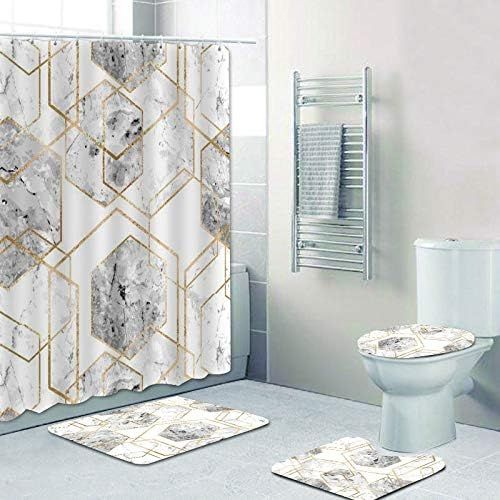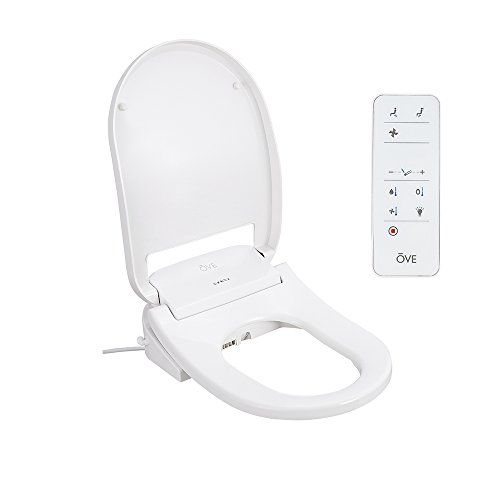How To Install Laminate Flooring In Bathroom
Are you tired of your old, worn-out bathroom flooring? It’s time to upgrade to laminate flooring and give your bathroom a fresh new look.
In this article, we will guide you through the process of installing laminate flooring in your bathroom.
First, you’ll need to measure and prepare the bathroom space, ensuring that you have the right amount of flooring.
Next, choose the perfect laminate flooring that suits your style and bathroom needs.
Don’t forget to gather all the necessary tools and materials before you start the installation process.
Once you’re ready, remove the existing flooring and install the underlayment to provide a stable base for your new flooring.
Then, it’s time to lay and secure the laminate flooring planks, followed by trimming and finishing the edges for a polished look.
Lastly, apply a waterproof sealant to protect your new flooring from moisture and enjoy the transformation of your bathroom.
With our step-by-step instructions, you’ll be able to install laminate flooring in your bathroom like a pro.
Key Takeaways
- Laminate flooring is a suitable choice for bathroom flooring due to its water resistance.
- The installation of laminate flooring in bathrooms requires proper measuring, preparation, and removal of existing flooring.
- Laminate flooring offers durability, easy maintenance, and a wide variety of styles and designs.
- Applying a waterproof sealant is essential for protecting laminate flooring from moisture damage in bathrooms.
Measure and Prepare the Bathroom Space
Now, you’re going to want to grab your measuring tape and get down on your hands and knees to measure the dimensions of your bathroom space. This step is crucial in ensuring that you have the right amount of laminate flooring for your project.
Start by measuring the length and width of the bathroom, making note of any nooks or crannies that may affect the layout. Take into account any fixtures or cabinets that may need to be cut around.
Once you have the measurements, you can start exploring different flooring options that are suitable for bathrooms. Laminate flooring is a popular choice due to its durability, water resistance, and wide range of styles. It’s important to select a laminate flooring that is specifically designed for moisture-prone areas like bathrooms.
Choose the Right Laminate Flooring for the Bathroom
First, you’ll want to select the perfect laminate option that’ll bring a touch of elegance to your bathroom. When choosing laminate flooring for your bathroom, it’s important to consider whether you need waterproof or water-resistant laminate. Here are some advantages of laminate flooring to keep in mind:
-
Durability: Laminate flooring is known for its strength and ability to withstand heavy foot traffic. It can resist scratches, stains, and fading, making it an ideal choice for bathrooms.
-
Easy maintenance: Laminate flooring is easy to clean and maintain, requiring only regular sweeping and occasional mopping. Spills and moisture can be quickly wiped away without causing damage.
-
Wide variety: There’s a wide range of laminate flooring options available, allowing you to find the perfect style and design to complement your bathroom decor.
-
Cost-effective: Compared to other flooring options, laminate flooring is a cost-effective choice that doesn’t compromise on quality or aesthetics.
By considering these factors, you can choose the right laminate flooring for your bathroom, creating a beautiful and functional space.
Gather the Necessary Tools and Materials
To achieve a polished outcome, you’ll need to arm yourself with essential tools and materials before embarking on this home improvement project.
When it comes to choosing flooring for your bathroom, laminate is a popular and practical option. It’s durable, easy to clean, and resistant to moisture.
Now that you’ve selected the perfect laminate flooring, it’s time to gather the necessary tools and materials for installation. You’ll need a tape measure to accurately measure the dimensions of your bathroom, a circular saw to cut the laminate planks to size, and a jigsaw for any intricate cuts around fixtures.
Additionally, you’ll need a rubber mallet for gently tapping the planks into place, a pull bar to secure the edges, and spacers to ensure a consistent gap between the flooring and the walls.
By having these tools and materials at your disposal, you’ll be ready to tackle the laminate installation techniques with confidence and precision.
Remove the Existing Flooring
Get ready to transform your bathroom by starting with the exciting step of removing the old, worn-out flooring. Before you begin, gather the necessary tools and materials, including safety goggles, gloves, a pry bar, a hammer, and a utility knife. It’s important to take the time to properly remove the existing flooring to ensure a smooth and successful installation of your new laminate flooring.
To help you visualize the process, check out a demo video online that provides step-by-step instructions. This will give you a clear understanding of the techniques and tools required for this task. Additionally, be aware of common mistakes that people make when removing flooring, such as not properly disconnecting plumbing fixtures or not removing baseboards and trim before starting. By avoiding these mistakes and following the correct procedures, you’ll be on your way to a beautiful new bathroom floor in no time.
| Tools and Materials Needed |
|---|
| Safety goggles |
| Gloves |
| Pry bar |
| Hammer |
| Utility knife |
Install the Underlayment
Now that you’ve successfully removed the old flooring, it’s time to give your new laminate floor a solid foundation by installing the underlayment.
The underlayment is a crucial step in the installation process as it helps to reduce noise, provides insulation, and acts as a moisture barrier. There are different types of underlayment available, such as foam, cork, and rubber, each with its own advantages and suitability for specific needs.
To install the underlayment, start by cleaning the subfloor and ensuring it’s smooth and dry. Roll out the underlayment across the entire floor, making sure to overlap the seams by a few inches and secure it in place with tape. Trim any excess underlayment around the edges.
It’s important to follow the manufacturer’s instructions for the specific type of underlayment you’re using to ensure proper installation.
By installing the underlayment correctly, you’re creating a stable and durable base for your new laminate flooring, ensuring a long-lasting and beautiful result.
Lay and Secure the Laminate Flooring Planks
After properly preparing the underlayment, start laying down the laminate flooring planks. Secure them tightly together to create a seamless and visually pleasing floor.
When installing laminate flooring in your bathroom, it’s important to choose the right planks that are specifically designed for moisture-prone areas. Laminate flooring offers a wide range of bathroom flooring options, providing durability and easy maintenance.
Begin by placing the first plank against the wall, making sure to leave a small gap for expansion. Continue by connecting the second plank to the first, using the tongue and groove system. Gently tap the planks together using a rubber mallet to ensure a snug fit. Repeat this process until you’ve covered the entire bathroom floor. Be sure to stagger the planks for a more natural look.
Once all the planks are installed, use a tapping block to secure them tightly together. This will prevent any movement or gaps between the planks. Finally, trim the excess underlayment and install the baseboards to complete the installation.
Trim and Finish the Edges
To achieve a polished and refined look, you’ll want to carefully trim and finish the edges of your newly laid laminate planks. Here’s how to do it:
-
Select baseboard: Choose a baseboard that complements the color and style of your laminate flooring. Measure and cut the baseboard to fit along the edges of the floor, ensuring a snug and seamless fit.
-
Seal the edges: Apply a bead of silicone caulk along the edges of the laminate flooring, where it meets the walls or other surfaces. This’ll create a waterproof barrier and prevent moisture from seeping under the planks.
-
Trim the excess: Use a jigsaw or a handsaw to carefully trim any overhanging or uneven laminate planks along the edges. Take your time and make precise cuts to ensure a clean and professional finish.
-
Finish touches: Install quarter round molding along the baseboards to cover any gaps or imperfections. Use a nail gun or adhesive to secure the molding in place, and give it a final touch-up with a matching color sealant to blend it seamlessly with the laminate flooring.
Following these steps will help you achieve a flawless and polished look for your laminate flooring in the bathroom.
Apply a Waterproof Sealant
Applying a waterproof sealant ensures that moisture can’t seep under the planks of your newly laid laminate flooring, providing added protection and durability.
When it comes to waterproofing techniques for laminate flooring in the bathroom, a sealant is essential. It creates a barrier that prevents water from penetrating the surface and causing damage to the underlying layers. By applying a waterproof sealant, you can enjoy the advantages of laminate flooring, such as its affordability, easy installation, and resistance to scratches and stains, without worrying about moisture-related issues.
This step is particularly important in bathrooms where water spills and humidity levels are high. A waterproof sealant not only safeguards your investment but also prolongs the lifespan of your laminate flooring, making it a wise choice for any bathroom renovation project.
Enjoy Your New Bathroom Flooring
Now that you’ve got your new waterproof laminate flooring in place, it’s time to kick back, relax, and enjoy your stylish and worry-free bathroom upgrade! Here are a few tips to help you make the most of your new flooring:
-
Choosing bathroom fixtures: Consider selecting fixtures that complement the color and style of your laminate flooring. Opt for materials that’re resistant to water and moisture, such as stainless steel or chrome.
-
Cleaning laminate flooring: To keep your laminate flooring looking pristine, sweep or vacuum regularly to remove dirt and debris. Use a damp mop with a mild cleaner specifically designed for laminate floors. Avoid using excessive water, as it can cause damage.
-
Maintaining laminate flooring: Prevent scratches and dents by placing felt pads under furniture legs. Wipe up spills promptly to avoid staining. Avoid using harsh chemicals or abrasive cleaners that can strip the protective layer of your laminate flooring.
By following these tips, you can ensure that your bathroom fixtures and laminate flooring stay in great condition for years to come.
%product_cta:6%
Frequently Asked Questions
Can laminate flooring be installed directly over existing vinyl flooring?
Yes, laminate flooring can be installed directly over existing vinyl flooring. This is an advantage of laminate flooring in bathrooms as it eliminates the need to remove the vinyl, saving time and effort.
How long does it typically take to install laminate flooring in a bathroom?
Minimize installation time for laminate flooring in a small bathroom by following these tips: choose pre-cut planks for quicker installation, ensure the subfloor is clean and leveled, use a laminate underlayment for added durability.
Can I install laminate flooring in a bathroom with a shower or bathtub?
Yes, you can install laminate flooring in small bathrooms with a shower or bathtub. However, there are pros and cons to consider. Laminate is durable and affordable, but it can be damaged by excessive moisture.
Can I install laminate flooring in a bathroom with a radiant heating system?
Yes, you can install laminate flooring over radiant heating in a bathroom. The pros include a warm, cozy floor and energy efficiency. However, the cons are that laminate flooring can be damaged by moisture and may not be as durable as other flooring options.
Is it necessary to remove the toilet before installing laminate flooring in a bathroom?
Yes, it is necessary to remove the toilet before installing laminate flooring in a bathroom. This allows for a proper and seamless installation of the flooring, ensuring a beautiful and functional bathroom space.
Conclusion
Congratulations on successfully installing laminate flooring in your bathroom! You’ve transformed your bathroom into a stylish and durable space. With the right tools, materials, and techniques, you’ve created a beautiful floor that will withstand moisture and everyday wear. Now, you can confidently enjoy your new bathroom flooring, knowing that you’ve accomplished a professional-quality installation.











.jpg)








